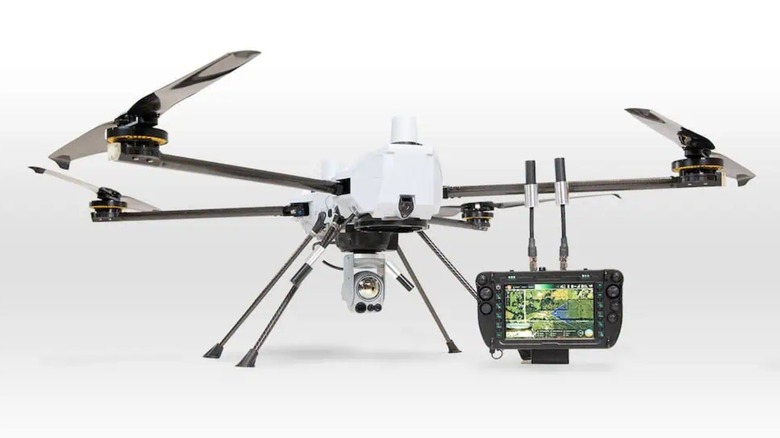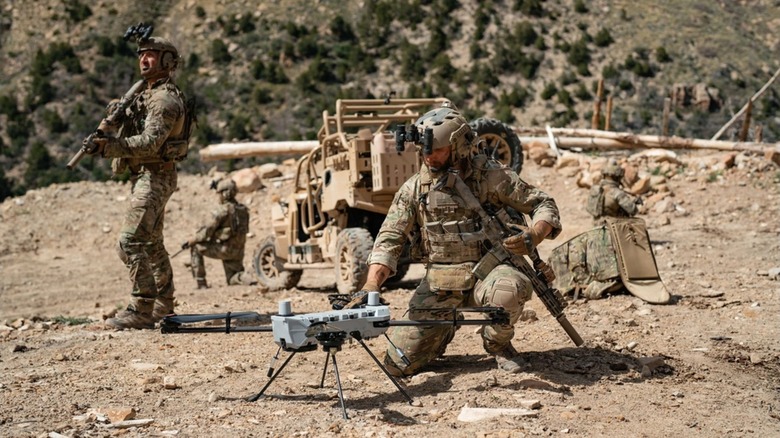Laser-Equipped Backpack Drones Are Taking On One Of The US Army's Most Dangerous Jobs
There are many jobs in the United States Army that are dangerous — it's the military, after all. Still, there are a few jobs or tasks that are considerably more dangerous than others. In the Navy, working in the danger zone on the deck of an aircraft carrier comes with plenty of potential peril, while the Army and other ground combat forces are often engaged in direct contact with the enemy. One task above all else is considerably more dangerous than others, and it's laser-painting targets.
You've probably seen it in movies: a small team of Special Forces operators is behind enemy lines, keeping watch on a target building. They then use a laser to direct laser-guided bombs onto their targets, and as you can imagine, it's not the safest thing to do. After all, these brave warriors are almost danger close throughout the operation and must remain in place to keep the target painted to ensure the strike goes off without a hitch. Fortunately, a new development may significantly reduce the risk for future operators.
Performance Drone Works (PDW) manufactures the C100 compact drone (pictured), which it sold to the U.S. Army in 2024 and 2025 for two separate deals worth a total of $36.2 million. These drones have numerous capabilities, but the one that's likely to aid soldiers on the ground the most is their ability to mark targets. This would eliminate or significantly mitigate the risk to troops on the ground, freeing them up for other tasks while functioning as a force multiplier.
The C100 could change the way the Army designates targets
Laser designation of a target can be done via aircraft like the highly capable AH-64 Apache helicopter, but these systems are considerably more expensive and prone to risk than the C100. Another option is an MH-60 Black Hawk variant, but these, too, are far more expensive than drones. Should PDW's drone function as advertised, it will free up costs, improve laser designation of potential targets, and reduce the risk to operators. The C100 with an attached laser designator isn't cheap, costing between $400,000 and $500,000.
Still, an AH-64 costs around $30 million, so you can already see a cost-benefit in switching to a far less expensive drone. A C100 is also easily transportable, fitting into a single rucksack, making it an extension of an individual soldier. They have a range of 6 miles, a top speed of 40 mph, and a maximum altitude of 12,000 feet for a total operation time of 74 minutes of endurance.
This is more than enough to aid operators on the ground in safely sending up a C100, identifying a target without endangering themselves, and packing up and leaving once the job is done. What's more, losing a C100 is far preferable to losing a person, so should these drones be used as they've been tested, they're likely to see widespread use in military operations worldwide. PDW also demonstrated the C100's targeting capabilities to the United Kingdom Ministry of Defense, suggesting the Alabama-based defense contractor could supply its drones to NATO allies as well as the U.S.

